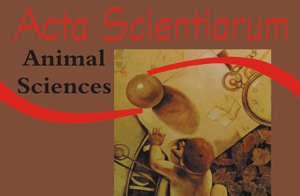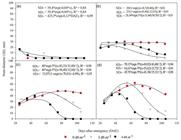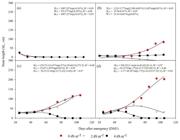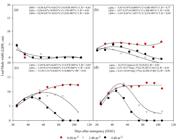ABSTRACT.
Agricultural production in semi-arid regions is limited due to water availability. In addition, the water quality available for irrigation is often compromised due to the high salt content present. Millet is a forage species considered tolerant to water deficit and moderately salt tolerant. In view of the above, the objective was to evaluate the growth of millet under water and saline stress associates. The experiment was carried out in a randomized block design, in a 4x3 factorial scheme, composed of four levels of water replacement, based on crop evapotranspiration (ETc): 25%.ETc, 50%.ETc, 75%.ETc and 100%.ETc and three levels of water salinity (0.03, 2.0 and 4.0 dS m-1). With 25%.ETc independent of salinity, all morphological characteristics of millet were affected, occurring death of plants in the initial growth phase. In the absence of salt and greater availability of water, greater plant growth occurred. With respect to salinity, there was a reduction in the increment of all variables evaluated, with the highest reduction at the highest saline level (4.0 dS m-1). Water and salt stresses, when associated, reduce the growth of millet, since concentrations above 2.0 dS m-1 and less than 50%.ETc compromise its full development, providing declines in yield.
Keywords:
water availability; abiotic stresses; forage; millet; salinity

 Thumbnail
Thumbnail
 Thumbnail
Thumbnail
 Thumbnail
Thumbnail
 Thumbnail
Thumbnail
 Thumbnail
Thumbnail
 Thumbnail
Thumbnail
 Thumbnail
Thumbnail
 Thumbnail
Thumbnail
 Thumbnail
Thumbnail








